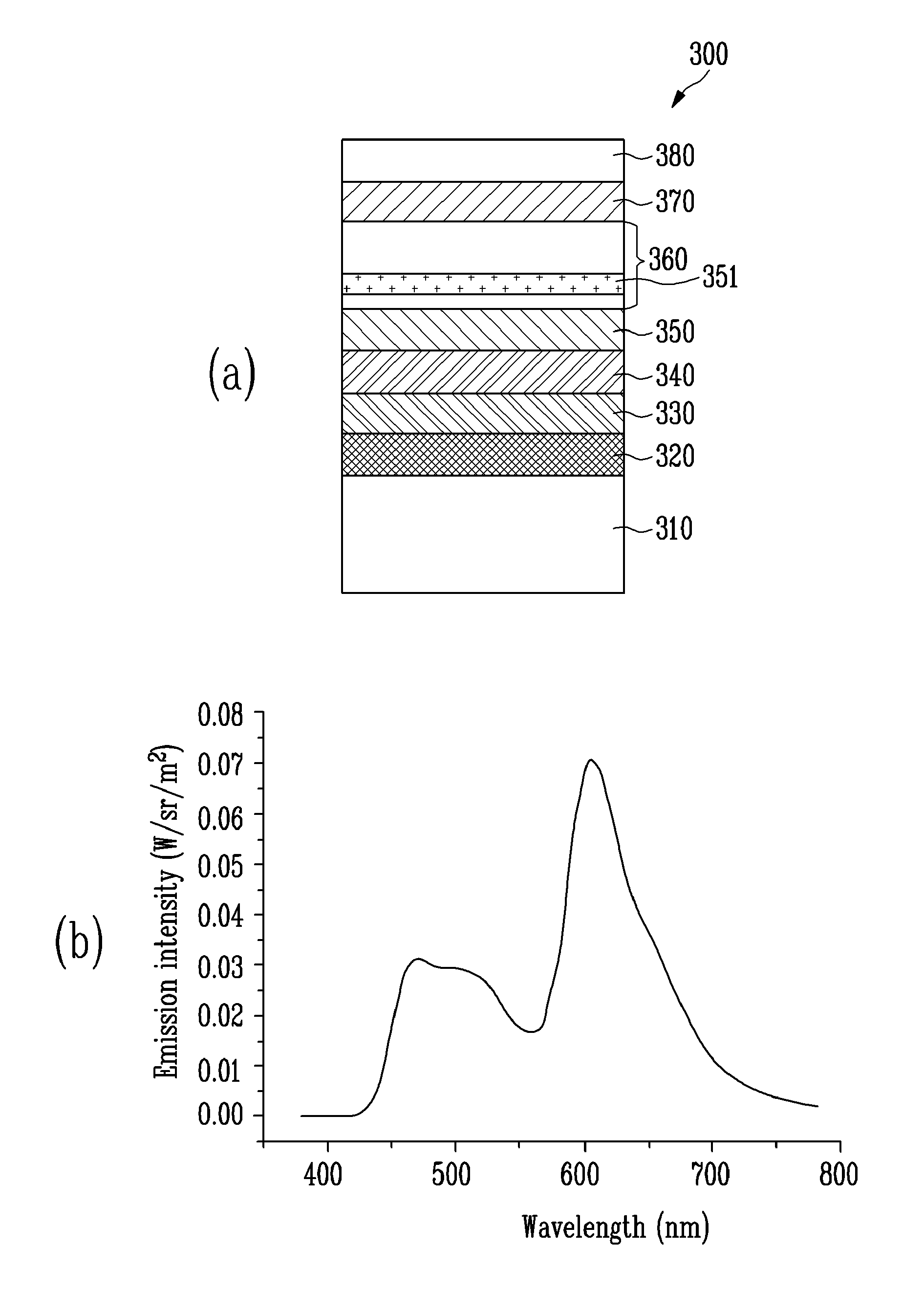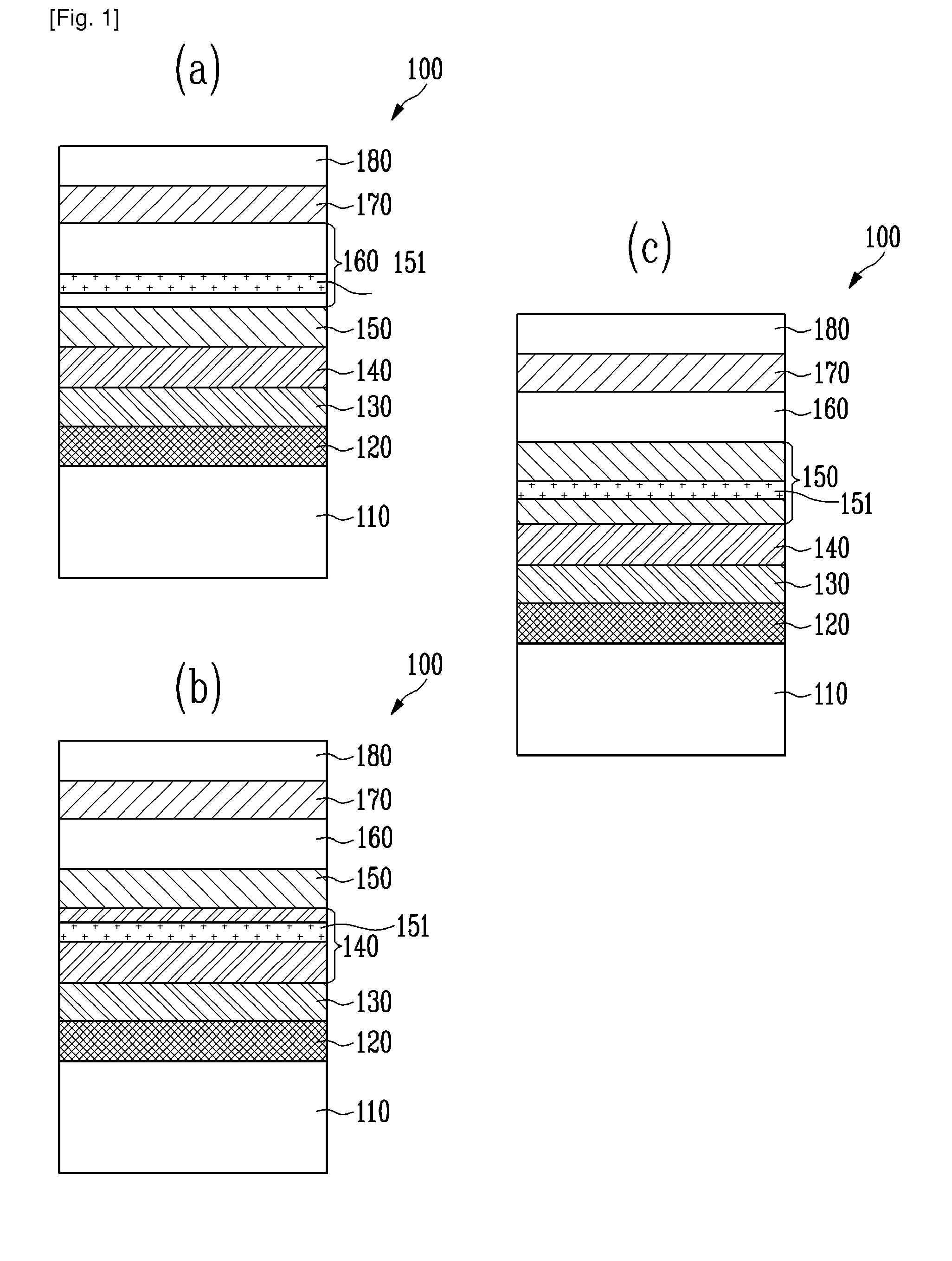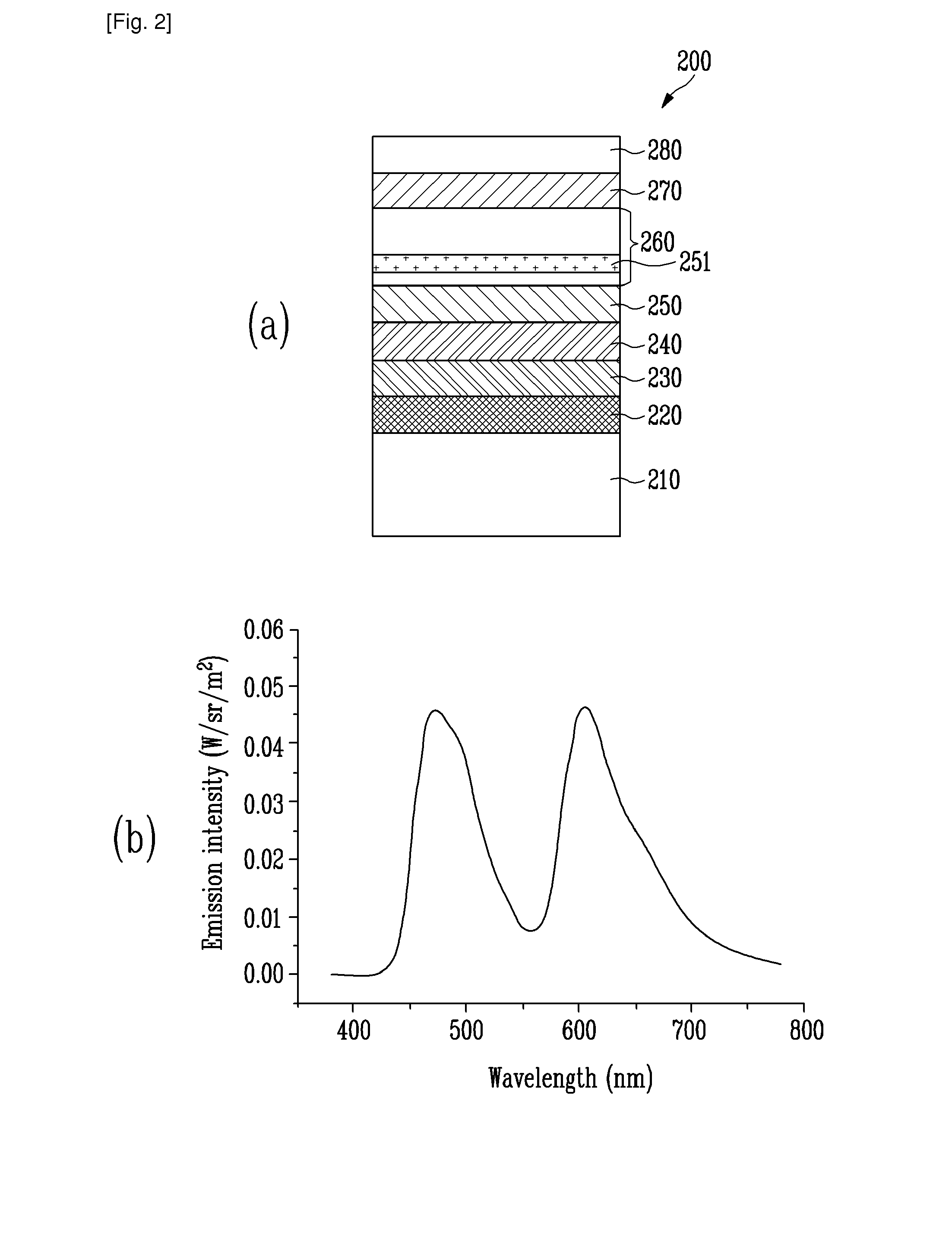Hybrid white organic light emitttng device and method of manufacturing the same
a light emitting diode and hybrid technology, applied in the direction of solid-state devices, electric lighting sources, electric light sources, etc., can solve the problems of light emission loss and achieve the effect of high efficiency
- Summary
- Abstract
- Description
- Claims
- Application Information
AI Technical Summary
Benefits of technology
Problems solved by technology
Method used
Image
Examples
embodiment 1
[0026]FIGS. 1A to 1C illustrate a stacked structure of a hybrid white OLED 100 according to a first exemplary embodiment of the present invention.
[0027]As illustrated in FIG. 1A, the hybrid white OLED 100 according to the present invention includes a substrate 110, a first electrode 120, a hole injection layer 130, a hole transport layer 140, a blue / green fluorescent emission layer 150 including a dopant and a host, an electron transport layer 160 formed on the fluorescent emission layer 150 and formed of a material having a higher HOMO level difference with the host of the fluorescent emission layer 150 than that between the other layers, an auxiliary emission layer 151 formed in the electron transport layer 160 and including a dopant and a host, which receive energy from triplet excitons of the fluorescent emission layer 150 and emit light, an electron injection layer 170 and a second electrode 180.
[0028]As described above, the host of the fluorescent emission layer 150 and the el...
embodiment 2
[0039]FIG. 2A illustrates a stacked structure of a hybrid two-wavelength white OLED 200 according to a second exemplary embodiment of the present invention, and FIG. 2B is a graph illustrating light emitting characteristics of the hybrid two-wavelength white OLED illustrated in FIG. 2A.
[0040]Referring to FIG. 2A, the hybrid two-wavelength white OLED 200 according to the present invention includes a substrate 210, a first electrode 220, a hole injection layer 230, a hole transport layer 240, a blue fluorescent emission layer 250, an electron transport layer 260, a red auxiliary emission layer 251, an electron injection layer 270, and a second electrode 280.
[0041]In order to fabricate the hybrid two-wavelength white OLED 200 illustrated in FIG. 2A, first, the substrate 210 is prepared. The substrate 210 may be formed of glass having transparency, quartz, or a flexible panel (e.g., plastic, and a metal thin film), and the first electrode 220 is formed on the substrate 210. The first el...
embodiment 3
[0051]FIG. 3A illustrates a stacked structure of a hybrid three-wavelength white OLED 300 according to a third exemplary embodiment of the present invention, and FIG. 3B is a graph illustrating light emitting characteristics of the hybrid three-wavelength white OLED 300 illustrated in FIG. 3A.
[0052]Referring to FIG. 3A, the hybrid three-wavelength white OLED 300 according to the present invention includes a substrate 310, a first electrode 320, a hole injection layer 330, a hole transport layer 340, a blue / green fluorescent emission layer 350, an electron transport layer 360, a red auxiliary emission layer 351, an electron injection layer 370, and a second electrode 380.
[0053]In order to fabricate the hybrid three-wavelength white OLED 300 illustrated in FIG. 3A, first, the substrate 310 is prepared. The substrate 310 may be formed of glass having transparency, quartz, or a flexible panel (e.g., plastic, and a metal thin film), and the first electrode 320 is formed on the substrate ...
PUM
 Login to View More
Login to View More Abstract
Description
Claims
Application Information
 Login to View More
Login to View More - R&D
- Intellectual Property
- Life Sciences
- Materials
- Tech Scout
- Unparalleled Data Quality
- Higher Quality Content
- 60% Fewer Hallucinations
Browse by: Latest US Patents, China's latest patents, Technical Efficacy Thesaurus, Application Domain, Technology Topic, Popular Technical Reports.
© 2025 PatSnap. All rights reserved.Legal|Privacy policy|Modern Slavery Act Transparency Statement|Sitemap|About US| Contact US: help@patsnap.com



